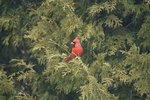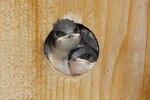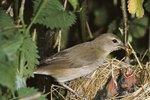Things You'll Need
Cat or small dog carrier
Old towels
Goggles or eyewear protection
Paper towels or rags to clean up bird mess
Large well-ventilated cage, kennel, dog carrier or cardboard box
Syringe, pipette or eye-dropper
Other person to help (if possible)
It is illegal to keep woodpeckers as pets. Woodpeckers are wild birds and their populations are rapidly dwindling. However, you are allowed to help care for a sick or injured woodpecker until you can bring it to a wild bird rehabilitation center. A usual animal rescue center often will not know how to care for the woodpecker, other than put it to sleep. You cannot keep the woodpecker after the bird is well.
Determine how bad the injury or illness is. If you can touch the woodpecker and it doesn't fly away, it's bad. Notice if there is any swellings, bleeding or holding a limb awkwardly.
Preferably, get eye protection on, a pet carrier and a towel. If you have someone with you, have someone stay with the bird and then go get the equipment.
Call vet or local fish and game department for the contact information on where a bird rehabilitation place is. If the woodpecker is bad off, then it really needs help from people experienced with birds.
Keep the bird warm. This is important. Wrap the woodpecker in a towel and place under your shirt next to your skin.
Do not feed the bird when it's cold. It will eat, but will not be able to digest the food. Feeding at this point could do more harm than good.
When warmed up, you can offer the bird warmed Pedialyte, Gatorade or a mixture to give the bird needed fluids. Do not give cold drinks. You can make a mixture of 1 tablespoon salt, 3 tablespoons sugar in one quart of warm water. Feed every 15-30 minutes with a syringe, pipette or eye-dropper. Some birds can drink from a spoon or a water bowl, but they usually splash around more fluid than they drink.
When the woodpecker has stabilized, wrap in towel, place in carrier and get to the bird rehabilitation center.
Tips
Your fish and game department and your local animals shelters can help get you in contact with bird rescue centers and about all of the legal details in keeping a sick or injured woodpecker. Woodpeckers prefer you pick them up with bare hands and their heads away from your body.
Warnings
Don't try to pick up the bird from the tail. The woodpecker will just drop the tail feathers and get away. Keep the woodpecker out of drafts. Keep the woodpecker away from tobacco smoke as much as possible. Do not keep the woodpecker longer than it takes to get them well.
Photo Credits
-
Woodpecker image by Maria Corcacas
Writer Bio
Rena Sherwood is a writer and Peter Gabriel fan who has lived in America and England. She has studied animals most of her life through direct observation and maintaining a personal library about pets. She has earned an associate degree in liberal arts from Delaware County Community College and a bachelor's degree in English from Millersville University.




